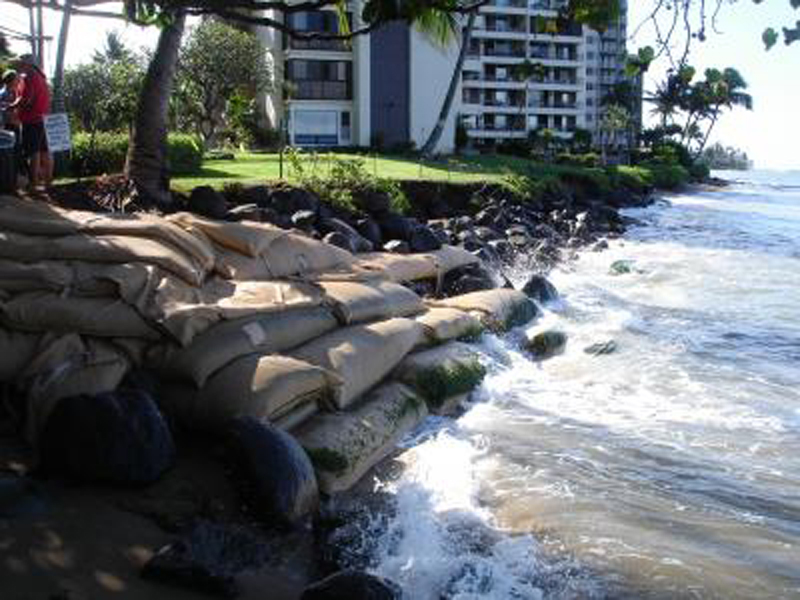Hawaii Beach Erosion Blamed on Rising Seas

Sea level rise may be the main force driving beach erosion in Hawaii, new research suggests.
Shorelines naturally change through time as a result of many factors, including changes in sea level, ocean currents and the strength of waves, all of which control the amount of sand brought to beaches versus the amount of sand dragged out to sea.
To determine the relative role of sea level rise on beach erosion within the islands of Hawaii, researchers at the University of Hawaii first compared erosion rates on Maui and Oahu, based on a combination of aerial photographs and seafloor topography data from within the past century. These analyses showed that Maui has eroded far more than Oahu has over this time period, retreating at an average rate of about 5 inches (13 centimeters) per year compared with Oahu's average rate of about 1 inch (3 cm) per year.
Struck by the marked difference in erosion rates between the two islands, the team compared the potential factors controlling these rates, including sea level rise, wave activity and the volume of offshore sand available to replenish beaches.
The team found that the effects of wave activity and sand availability were comparable on both islands, but that the average rate of sea level rise was 65 percent higher on Maui than on Oahu. This key difference, they say, suggests that sea level rise is the main driver of erosion on these two islands on a regional scale.
"If sea level comes up, shorelines will recede as the water level comes up," said Brad Romine, a coastal geologist at the University of Hawaii Sea Grant College Program and a co-author on the study. "What is not well understood is if these relatively low rates of sea level rise were enough to have a significant effect on shoreline processes, and it appears that, yes, it does."
Maui's sea level rise surpasses Oahu's for several reasons, including Maui's close proximity to the actively volcanic Big Island of Hawaii, which is currently growing and dragging neighboring islands down into the crust as it sinks under its own weight. Other factors, such as sea surface temperature and ocean currents, also contribute to local variations in sea level rise, Romine said.
Sign up for the Live Science daily newsletter now
Get the world’s most fascinating discoveries delivered straight to your inbox.
In addition to these local effects, global sea level rose an average of 2 millimeters (less than a tenth of an inch) per year over the past century, and has been implicated in beach erosion rates elsewhere in the world, including the East Coast of the United States. In recent years, this rate has accelerated to about 3 millimeters (0.1 inch) per year, potentially due to increasing sea surface temperatures induced by anthropogenic, or human-induced, climate change. This global increase in sea level is expected to compound the local rates of sea level rise in Hawaii in the coming century, posing increasing risks to coastal communities there, Romine said.
The team hopes that their research will help motivate local policymakers to actively prepare for this expected sea level rise.
"The next step is to help inform the coastal managing agenda here in Hawaii," Romine said. "There is a lot of talk about sea level rise here in Hawaii, as there is globally about global sea level rise. So this study has added information in that regard, showing that sea level rise is an important factor in the shoreline trends we see here, and is likely to be become an increasingly important factor in the future."
The findings appeared earlier this month in the journal Global and Planetary Change.
Follow Laura Poppick on Twitter. Follow LiveScience on Twitter, Facebook and Google+. Original article on LiveScience.










